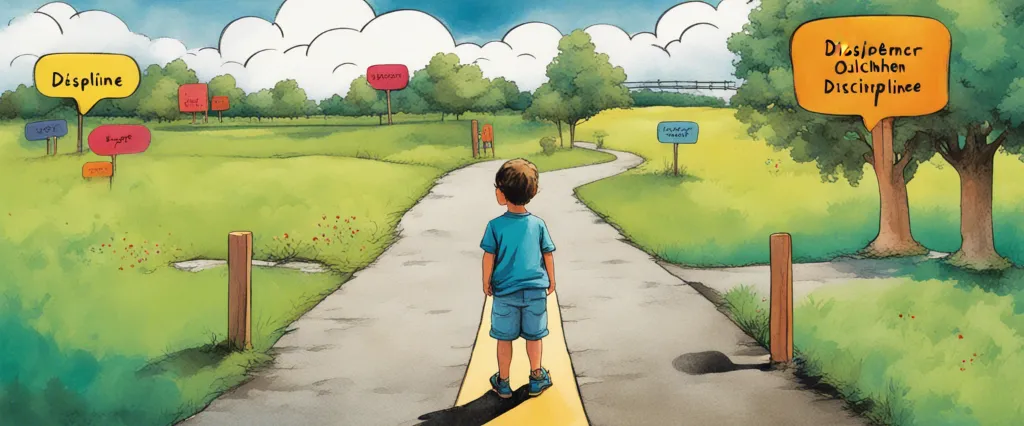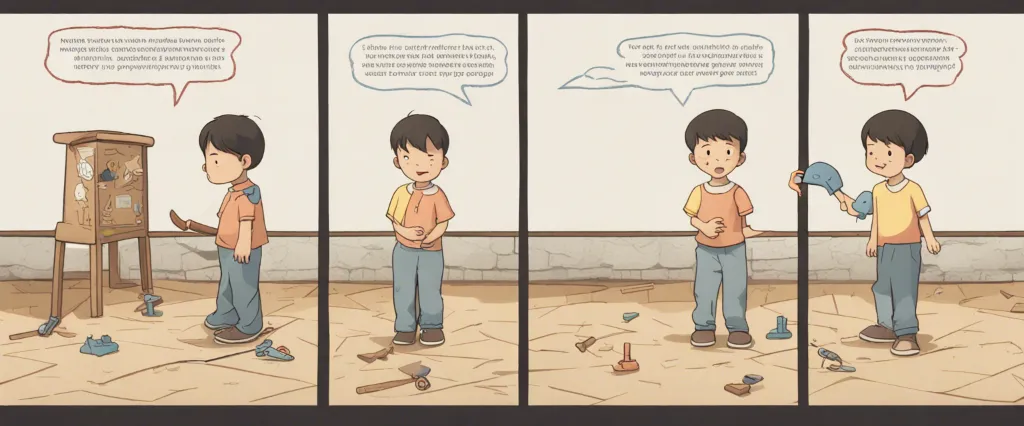
Within the realm of raising children, parents seek guidance and insights from a wide array of resources in their quest to fulfill their role effectively. Often, these sources offer diverse perspectives on child development, discipline, and education, paving the way for a richer understanding of the complexities involved. Among the vast literature available, two books stand out: Positive Discipline by Jane Nelsen and How Children Fail by John C. Holt.
Jane Nelsen’s Positive Discipline, first published in 1981, presents a comprehensive approach to respectful parenting, emphasizing the importance of cooperation, connection, and understanding in disciplining children. On the other hand, John C. Holt’s How Children Fail, published in 1964, challenges conventional notions of education by highlighting the negative impact of traditional classroom settings on children’s intellectual and emotional growth.
In this comparative study, we shall delve into the core ideas put forth by Nelsen and Holt in their respective works. By examining the theories, strategies, and recommendations presented by each author, we aim to shed light on the similarities and differences between Positive Discipline and How Children Fail. Ultimately, our exploration will offer readers a deeper insight into the diverse perspectives on modern parenting and education.
Through her book Positive Discipline, Jane Nelsen encourages parents and caregivers to rethink traditional disciplinary methods that rely on punishment or rewards. Instead, Nelsen advocates for an approach based on mutual respect, cooperation, and logical consequences. She provides practical techniques and strategies to foster healthy communication, decision-making, and problem-solving skills in children, aiming to create a nurturing and respectful family dynamic that promotes self-discipline.
In contrast, John C. Holt’s How Children Fail presents an eye-opening critique of the educational system prevalent in the mid-20th century. Holt asserts that the traditional classroom setting inhibits a child’s natural curiosity, creativity, and innate love for learning. Drawing from his own experiences as a teacher, Holt advocates for a more flexible and child-centric approach to education, encouraging parents and educators to view children as active participants in their own learning journeys, rather than passive recipients of information.
As we embark on this comparative study, we shall examine the core principles, methodologies, and research backing these two influential works. Furthermore, we shall explore how the ideas put forward by Nelsen and Holt align with or contradict each other, and how they have influenced current thinking in the fields of parenting and education.
By critically analyzing Positive Discipline and How Children Fail, we aim to extend our comprehension of effective parenting techniques and create a synthesis of ideas that parents, caregivers, and educators can apply successfully in their efforts to guide and nurture children. Throughout our study, we shall highlight the potential for an integrated perspective that can reconcile the sometimes divergent approaches offered by Nelsen and Holt. Ultimately, our aim is to facilitate a deeper understanding of the complex nature of child development and the role of adults in shaping their growth, potential, and well-being.
Brief Summary of Two Books
Positive Discipline by Jane Nelsen
“Positive Discipline” by Jane Nelsen is a practical guidebook that offers effective strategies and tools for parents and teachers to develop respectful and cooperative relationships with children. Nelsen emphasizes the importance of focusing on long-term goals of building self-discipline, responsibility, and problem-solving skills, rather than relying on punishments or rewards.
The book explores the core principles of positive discipline, such as mutual respect, kindness, and firmness. Nelsen explains the concept of natural consequences, which allow children to experience the direct outcome of their choices, encouraging them to learn from their mistakes. She also introduces the idea of logical consequences, where a consequence is directly related to the behavior, helping children understand the connection between their actions and the outcome.
Nelsen provides practical techniques and examples to help parents and educators implement positive discipline, including effective communication skills, active listening, and non-judgmental language. She also shares valuable strategies to deal with misbehavior, such as problem-solving sessions, family meetings, and the importance of allowing children to contribute their ideas and take responsibility for their actions.
Throughout the book, Nelsen emphasizes the significance of building strong connections with children, promoting mutual respect, understanding, and empathy. She encourages adults to model positive behavior and offer guidance rather than punishments, fostering a nurturing and supportive environment where children can learn and grow.
“Positive Discipline” is a valuable resource for anyone looking to develop effective discipline strategies and cultivate healthy relationships with children. It offers practical tools to promote cooperation, responsibility, and self-discipline while fostering respectful and loving connections within families and classrooms.
How Children Fail by John C. Holt
“How Children Fail” is a book written by John C. Holt and published in 1964. It provides a critical analysis of the American education system and offers insights into how children’s learning experiences can be negatively influenced by the traditional classroom setting.
Through various anecdotes and observations, Holt argues that the emphasis on grades, test scores, and rote memorization in schools often stifles children’s natural curiosity and creativity. He believes that this approach leads to children being afraid to take risks and fear failure, ultimately hindering their ability to learn and develop a genuine understanding of the subjects they study.
Holt argues that the current educational system is fixated on external rewards and punishments, preventing students from becoming active participants in their own learning process. He advocates for a more holistic approach to education that values students’ individual interests and allows them to explore topics that genuinely intrigue them. Holt also emphasizes the importance of learning from mistakes and the value of critical thinking and problem-solving.
In conclusion, “How Children Fail” offers a critique of the traditional educational system and provides valuable insights into how it can inadvertently hinder children’s learning and development. Holt proposes alternative approaches that prioritize students’ intrinsic motivation and active participation, ultimately aiming to create a more effective and engaging learning environment.
Comparison between Two Books

Similarities in Parent Child Communication
Positive Discipline by Jane Nelsen and How Children Fail by John C. Holt are both renowned books in the field of child psychology and education. While they approach the topic from different angles, there are some notable similarities in their discussion of parent-child communication.
1. Respectful communication: Both books emphasize the significance of respectful communication between parents and children. Nelsen suggests that maintaining a respectful tone and actively listening to children’s perspectives can foster a positive parent-child relationship. Holt similarly advocates for parents to treat their children as individuals and engage them in meaningful conversations, respecting their thoughts and ideas.
2. Empathy and understanding: Nelsen and Holt highlight the importance of empathy and understanding when communicating with children. Nelsen suggests that parents should try to understand their child’s perspective and emotions, expressing empathy towards their experiences. Similarly, Holt emphasizes the need for parents to empathize with their children’s learning struggles and frustrations, avoiding criticism or judgment.
3. Avoiding punishment: Both authors discourage the use of punishment as a means of communication with children. Nelsen advocates for positive discipline techniques that focus on teaching and guiding rather than punishing and coercing. Holt, in his book, criticizes the traditional educational system’s tendency to use punishment as a means to control children’s behavior, stating that it hinders effective communication and learning.
4. Encouraging autonomy and independence: Nelsen and Holt emphasize the importance of fostering independence and autonomy in children. Nelsen suggests that parents should enable children to make choices and solve problems on their own, promoting a sense of autonomy. Similarly, Holt believes that children learn best when they are given the freedom to explore and make their own discoveries, rather than being constantly directed by adults.
5. Active listening: Both books highlight the significance of active listening in parent-child communication. Nelsen suggests that parents should give their undivided attention to their children, paraphrasing and reflecting their words to demonstrate understanding. Holt emphasizes the need for teachers (and by extension, parents) to actively listen and respond to children’s questions and ideas, promoting meaningful conversations.
In summary, both Positive Discipline by Jane Nelsen and How Children Fail by John C. Holt emphasize the importance of respectful communication, empathy, avoiding punishment, encouraging autonomy, and active listening in parent-child interactions. These similarities underscore the value of fostering a positive and open atmosphere in which children can grow and learn effectively.
Divergences in Parent Child Communication
Positive Discipline by Jane Nelsen and How Children Fail by John C. Holt are both influential books in the field of education and parenting. While both books touch upon the topic of parent-child communication, they have different perspectives and approaches.
Positive Discipline by Jane Nelsen is a book that focuses on guiding parents to develop effective discipline strategies that promote mutual respect and cooperation. The book highlights the importance of open communication between parents and children, emphasizing the need for active listening, validation, and problem-solving. Nelsen encourages parents to involve children in decision-making processes and allows them to express their thoughts and feelings freely. The book emphasizes mutual respect as the foundation of effective parent-child communication.
On the other hand, How Children Fail by John C. Holt takes a different approach in discussing parent-child communication. Holt primarily explores the shortcomings of traditional education systems and their negative impacts on children’s learning abilities and motivation. While communication with parents is mentioned, it is not the central focus of the book. Holt argues that children fail in education due to various factors, including the lack of genuine and open dialogue between parents and teachers. He believes that children need to be heard and understood by adults if they are to succeed in their learning journeys.
The divergence in terms of parent-child communication between these two books lies in their emphasis and focus. Positive Discipline places great importance on nurturing open and respectful communication between parents and children, focusing on the parenting techniques and strategies that facilitate this process. In contrast, How Children Fail touches on parent-child communication in the context of the education system, highlighting the need for genuine dialogue between parents, teachers, and children to ensure successful learning experiences.
Overall, while both books acknowledge the significance of parent-child communication, Positive Discipline delves deeper into this aspect as a fundamental component of effective discipline and child-rearing, while How Children Fail examines communication more in relation to the broader educational environment.

Conclusion
There is no definitive answer to this question as it ultimately depends on the reader’s interests and specific needs. Both books offer valuable insights in different areas.
“Positive Discipline” by Jane Nelsen focuses on effective discipline techniques and provides guidance on raising responsible, respectful, and capable children. It offers practical strategies for parents and educators to promote positive behavior while enhancing children’s self-esteem. This book is particularly helpful for those seeking a comprehensive approach to discipline that emphasizes long-term positive outcomes.
On the other hand, “How Children Fail” by John C. Holt delves into the flaws and limitations of traditional education systems. Holt, an educator himself, critiques common teaching methods and explores the ways in which these methods can hinder a child’s learning and curiosity. This book may be more appealing to those interested in education reform and alternative approaches to learning.
To determine which book is more suitable, consider your interests, personal goals, and specific areas you wish to explore. Both books have received positive reviews and have influenced many parents and educators, so either one can provide valuable insights depending on your needs.

